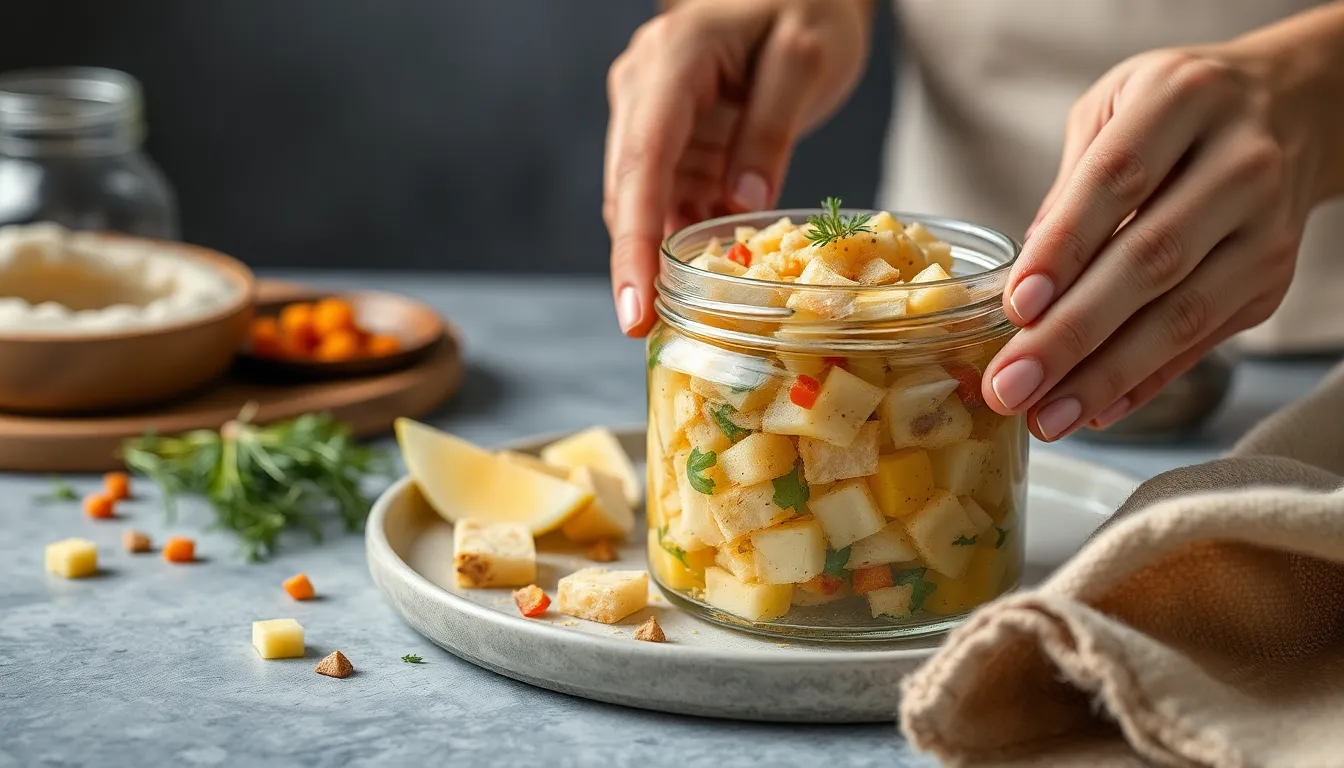body {
font-family: Arial, sans-serif;
line-height: 1.6;
margin: 20px;
}
h1, h2, h3 {
color: #2c3e50;
}
table {
width: 100%;
border-collapse: collapse;
margin: 20px 0;
}
th, td {
border: 1px solid #bdc3c7;
padding: 10px;
text-align: left;
}
th {
background-color: #ecf0f1;
}
How to Poach Eggs in a Baking Dish: A Simple Method
Introduction
Poaching eggs is a classic cooking technique that results in tender, delicate eggs with a creamy yolk. This method is favored by many for its health benefits, as poached eggs are prepared without added fats or oils, making them a lighter option compared to fried eggs. Furthermore, poached eggs offer a versatility that allows them to enhance countless dishes, from breakfast classics like eggs Benedict to salads and grain bowls.
In this guide, we will explore how to poach eggs using a baking dish, a method that simplifies the process while allowing you to prepare multiple eggs at once. Whether you’re cooking for yourself or hosting a brunch, this method is sure to impress!
Ingredients Needed
To successfully poach eggs in a baking dish, you’ll need the following essential ingredients:
- Eggs
- Water
- Salt and pepper
- Optional seasonings (herbs, cheese, etc.)
HTML Table: Ingredients List
| Ingredient | Quantity |
|---|---|
| Eggs | 4 large |
| Water | Enough to fill the baking dish |
| Salt | To taste |
| Pepper | To taste |
| Optional Seasonings | Herbs, cheese, etc. |
Equipment Required
In addition to the ingredients, you will need the following equipment:
- 1 Baking dish
- 1 Oven
- 1 Measuring cup
- 1 Whisk or fork (for optional seasonings)
Step-by-Step Instructions
1. Preheat the Oven
Start by preheating your oven to 350°F (175°C). Preheating is essential for even cooking, ensuring that the eggs are cooked gently and uniformly. Skipping this step may result in unevenly cooked eggs.
2. Prepare the Baking Dish
Next, take your baking dish and fill it with enough water to cover the bottom evenly, about an inch deep. Optionally, you can lightly grease the dish with a non-stick spray or butter to make it easier to remove the eggs later. You can also season the water with a pinch of salt to infuse the eggs with flavor.
3. Crack the Eggs
Now it’s time to crack the eggs. To avoid shell fragments in your dish, gently tap the egg against a flat surface, then use your thumbs to separate the shell. Allow the egg to slide into the baking dish, taking care not to break the yolk.
4. Seasoning the Eggs
Once all the eggs are in the baking dish, season them with salt and pepper. For added flavor, consider sprinkling herbs like chives, parsley, or dill over the top. You can also add crumbled cheese, such as feta or goat cheese, for a delicious twist.
5. Bake the Eggs
Place the baking dish in the preheated oven and bake for approximately 10-12 minutes. Keep an eye on the eggs; they are done when the whites are set but the yolks remain slightly runny. If you prefer firmer yolks, you can bake them for an additional 2-3 minutes.
6. Serve and Enjoy
Once the eggs are cooked to your liking, carefully remove the baking dish from the oven. Use a slotted spoon to gently lift the poached eggs out of the water. Serve them on toasted bread, over a bed of greens, or atop grains like quinoa or brown rice. For a finishing touch, garnish with fresh herbs or a sprinkle of paprika, and enjoy your perfectly poached eggs!
Tips for Perfectly Poached Eggs
- Ideal Egg Freshness: Fresh eggs are best for poaching, as they hold their shape better and have firmer whites.
- Importance of Water Temperature: The water should be at a gentle simmer, not a rolling boil, to prevent the eggs from breaking apart.
- Adjusting Cooking Time: Experiment with cooking times to achieve your preferred yolk consistency—shorter for runny yolks, longer for firmer ones.
Common Mistakes to Avoid
- Overcrowding the Baking Dish: Avoid adding too many eggs at once, as this can lead to uneven cooking.
- Not Using Enough Water: Make sure there’s enough water in the dish to keep the eggs submerged.
- Using Older Eggs: Older eggs may spread out in the water and become less visually appealing.
Conclusion
Poaching eggs in a baking dish is a simple and effective method that yields delicious results. Not only is it easy to master, but it also allows for creativity in flavoring and presentation. We encourage you to try this method in your own kitchen and experiment with different seasonings and serving ideas.
If you have any experiences or variations on poached eggs that you would like to share, please leave a comment below! Your culinary adventures inspire others!
Additional Resources
- Different Poaching Methods
- Egg Recipes to Try
- Recommended Baking Dishes
- Best Egg Timers for Perfect Poaching




